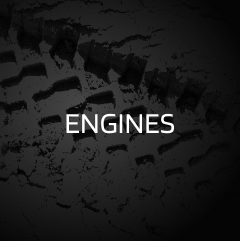 CCA Spares
CCA Spares
Engine Cooling Systems – Keeping Temperatures in Check
As we navigate through the intricate components of internal combustion engines, our focus now turns to a critical aspect that ensures optimal performance and longevity: the engine cooling system. Join us in exploring the functions, components, and importance of cooling systems in maintaining proper operating temperatures.
Cooling System Functions:
The primary function of an engine cooling system is to regulate the temperature of the engine, preventing it from overheating. Delve into the importance of maintaining a balanced temperature range for efficient combustion, minimized wear, and prevention of engine damage.
Components of a Cooling System:
Explore the key components that make up a typical engine cooling system:
- Radiator: The radiator is a heat exchanger that dissipates heat from the coolant using airflow.
- Water Pump: The water pump circulates coolant through the engine and radiator, ensuring a continuous cooling process.
- Thermostat: The thermostat regulates the flow of coolant based on engine temperature, optimizing the cooling process.
- Coolant Reservoir: The coolant reservoir serves as a storage and expansion tank for coolant, maintaining proper levels.
Coolant Circulation Process:
Understand the systematic flow of coolant through the engine cooling system, from the water pump circulating coolant through the engine, to the heat exchange in the radiator, and back to the engine. Explore how this continuous cycle ensures effective temperature regulation.
Types of Coolants:
Coolants play a crucial role in heat transfer and corrosion prevention. Delve into the types of coolants, including traditional ethylene glycol-based coolants and newer propylene glycol-based formulations. Understand the importance of proper coolant mixtures and maintenance.
Cooling System Maintenance:
Proper maintenance is essential to ensure the longevity and effectiveness of the cooling system. Explore maintenance practices such as regular coolant checks, flushing, and the replacement of worn-out components. Understand the signs of cooling system issues, such as coolant leaks and overheating, and the importance of timely repairs.
Cooling System Innovations:
Advancements in cooling system technology continue to improve efficiency and address environmental concerns. Explore innovations such as electric cooling fans, which enhance control over cooling, and the use of advanced materials to improve heat dissipation.
Overheating Prevention:
Overheating can lead to severe engine damage. Learn about preventive measures, including monitoring coolant levels, addressing leaks promptly, and the importance of avoiding prolonged engine idling.
Cooling System Challenges:
Explore challenges that cooling systems may face, such as air pockets, clogs, and issues with components like the thermostat. Understand how routine inspections and maintenance can help identify and address these challenges.
In conclusion, the engine cooling system is a vital component that safeguards the engine from overheating and ensures optimal performance. This article has provided a comprehensive exploration of its functions, components, and the importance of proper maintenance. Stay tuned for the next installment as we continue our journey through the intricate components of internal combustion engines.

